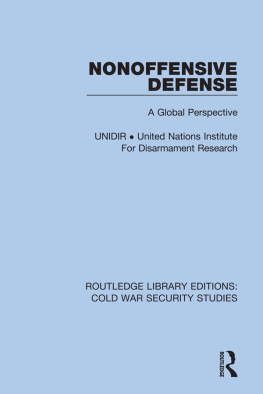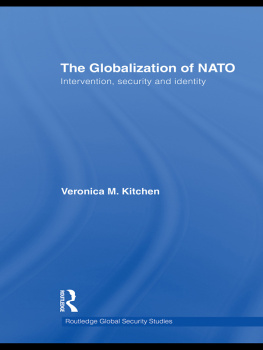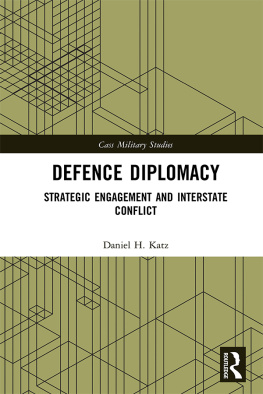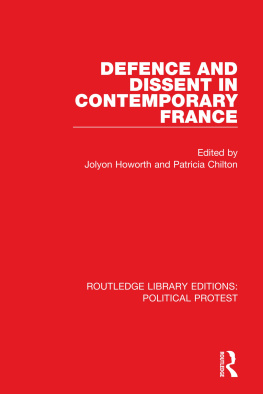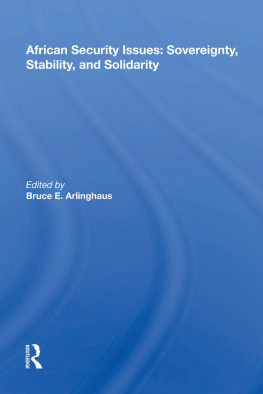First published in 1990 by Taylor & Francis Ltd
This edition first published in 2021
by Routledge
2 Park Square, Milton Park, Abingdon, Oxon OX14 4RN
and by Routledge
52 Vanderbilt Avenue, New York, NY 10017
Routledge is an imprint of the Taylor & Francis Group, an informa business
1990 United Nations Institute for Disarmament Research
All rights reserved. No part of this book may be reprinted or reproduced or utilised in any form or by any electronic, mechanical, or other means, now known or hereafter invented, including photocopying and recording, or in any information storage or retrieval system, without permission in writing from the publishers.
Trademark notice: Product or corporate names may be trademarks or registered trademarks, and are used only for identification and explanation without intent to infringe.
British Library Cataloguing in Publication Data
A catalogue record for this book is available from the British Library
ISBN: 978-0-367-56630-2 (Set)
ISBN: 978-1-00-312438-2 (Set) (ebk)
ISBN: 978-0-367-62821-5 (Volume 33) (hbk)
ISBN: 978-1-00-311096-5 (Volume 33) (ebk)
Publishers Note
The publisher has gone to great lengths to ensure the quality of this reprint but points out that some imperfections in the original copies may be apparent.
Disclaimer
The publisher has made every effort to trace copyright holders and would welcome correspondence from those they have been unable to trace.
| USA | Publishing Office: | Taylor & Francis New York Inc.
79 Madison Ave., New York, NY 10016-7892 |
| Sales Office | Taylor & Francis Inc.
1900 Frost Road, Bristol, PA 19007-1598 |
| UK | Taylor & Francis Ltd.
4 John St., London WC1N 2ET |
Nonoffensive Defense: A Global Perspective
Copyright 1990 United Nations Institute for Disarmament Research
All rights reserved. No part of this publication may be reproduced, stored in a retrieval system, or transmitted, in any form or by any means, electronic, electrostatic, magnetic tape, mechanical, photocopying, recording or otherwise, without the prior permission of the copyright owner.
First published 1990
Printed in the United States of America
Library of Congress Cataloging in Publication Data
Nonoffensive defense: a global perspective / UNIDIR.
p. cm.
Papers presented at a symposium organized by UNIDIR! held Sept.
1989, in New York City.
ISBN 0-8448-1683-3 (HC)
1. Deterrence (Strategy)Congresses. 2. Offensive (Military
Strategy)Congresses. 3. ArmamentsCongresses. 4. Military
policyCongresses. 5. World politics19851995Congresses.
I. United Nations Institute for Disarmament Research.
U162.6.N66 1990
355.0217dc20
90-11112
CIP
UNIDIR
United Nations Institute for Disarmament Research Institut des Nations Unies pour la Recherche sur le Desarmement
UNIDIR is an autonomous institution within the framework of the United Nations. It was established in 1980 by the General Assembly for the purpose of undertaking independent research on disarmament and related problems, particularly international security issues.
The work of the Institute aims at:
- Providing the international community with more diversified and complete data on problems relating to international security, the armaments race, and disarmament in all fields, particularly in the nuclear field, so as to facilitate progress, through negotiations, toward greater security for all States and toward the economic and social development of all peoples;
- Promoting informed participation by all States in disarmament efforts;
- Assisting ongoing negotiations in disarmament and continuing efforts to ensure greater international security at a progressively lower level of armaments; particularly nuclear armaments, by means of objective and factual studies and analyses;
- Carrying out more in-depth, forward looking, and long-term research on disarmament, so as to provide a general insight into the problems involved, and stimulating new initiatives for new negotiations.
The contents of UNIDIR publications are the responsibility of the authors and not of UNIDIR. Although UNIDIR takes no position on the view and conclusions expressed by the authors of its research reports, it does assume responsibility for determining whether they merit publication.
UNIDIR
Palais des Nations
CH-1211 Geneva 10
Tel. (022) 734 60 11
Contents
Chapter 1. Conventional Stability and Defense Dominance
Albrecht von Muller
Chapter 2. Defense Strategies
Jasjit Singh
Part II Defensive Strategies in NATO/WTO Relations
Chapter 3. Prospects for Arms Control
Andrzej Karkoska
Chapter 4. Military Restructuring and the Challenge of Europe
Gwyn Prins
Part III Defensive Strategies in Regions of Conflict: Northeast and Southeast Asia
Chapter 5. Nonprovocative Defense Strategy
Soedjati Djiwandono
Chapter 6. International Relations in Asia
Tomohisa Sakanaka
Chapter 7. Nonoffensive Defense and the Korean Peninsula
Hkan Wiberg
Part IV Defensive Strategies in Regions of Conflict: The Middle East and Central America
Chapter 8. Defensive Defense in the Middle East
Alex Gliksman
Chapter 9. Nonoffensive Defense Strategies in Central America
Luis Herrera-Lasso
Part V Defense, Disarmament, and the International Community
Chapter 10. Transition to Defense-oriented Configurations
Y. E. Fyodorov
Chapter 11. Defense, Disarmament, and Collective Security
Aga Shahi
Conclusion. Reflections on a Nonoffense Defense
Jefferey Laurenti
- Chapter 1. Conventional Stability and Defense Dominance
- Chapter 2. Defense Strategies
- Part II Defensive Strategies in NATO/WTO Relations
- Chapter 3. Prospects for Arms Control
- Chapter 4. Military Restructuring and the Challenge of Europe
- Part III Defensive Strategies in Regions of Conflict: Northeast and Southeast Asia
- Chapter 5. Nonprovocative Defense Strategy
- Chapter 6. International Relations in Asia
- Chapter 7. Nonoffensive Defense and the Korean Peninsula
- Part IV Defensive Strategies in Regions of Conflict: The Middle East and Central America
- Chapter 8. Defensive Defense in the Middle East
- Chapter 9. Nonoffensive Defense Strategies in Central America
- Part V Defense, Disarmament, and the International Community
- Chapter 10. Transition to Defense-oriented Configurations
- Chapter 11. Defense, Disarmament, and Collective Security
- Conclusion. Reflections on a Nonoffense Defense

